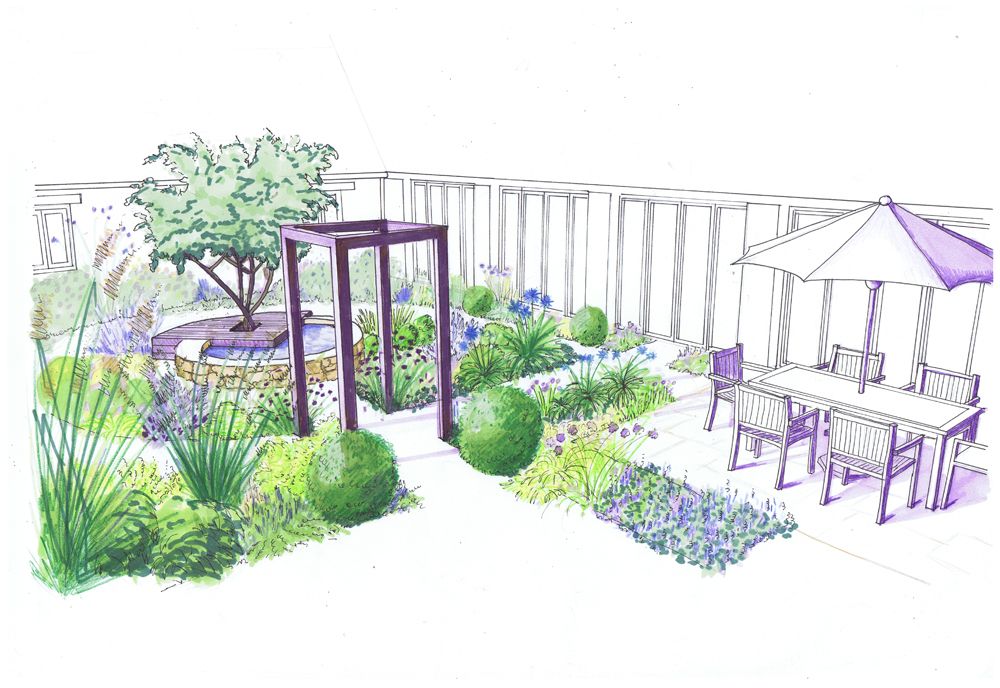
Principles of landscape designing
You imagine that you’re putting up your dream home. Even though everything is set, you’re bamboozled by the possibilities your home can be built upon. The design helps accentuate your yards way better. Each element brings a new dimension to your home. Crafting these elements and putting them in their right places can be challenging. But don’t worry though, you’re not the only person who’s worried about the principles of landscape designing.
Many suggest that the appropriate way to know what design fits the landscape of your home depends on how you perceive the term “home.”
Before analyzing that, let’s delve deep into the basics of landscape designing:
Order
You don’t want your home to have an outlook that screams “untidy”. No one signs up to feel untidy anyway. Hence, the order is the first principle that comes before anything while setting up a landscape vision.
Planning the skeleton or the foundation of the landscape can help bring order in your home structure. There are so many materials that are used while decorating landscape form. Having an untidy appearance can make you feel disoriented.
Hence, your house’s order, including the materials used to build it, should have definite co-ordination.
Emphasis
The term emphasis itself gives you the idea of priority. Do you like gardens? Maybe you can emphasize on having flowers in the front yard of your home. Do you want to keep the landscape form much more simple? Maybe giving importance to light colours will help fit your idea.
No matter what your plans are, you can accomplish them by only prioritizing essential things. Architectural features pop up more when the specific association is provided. If you want your front yard to be the focal point, you can try putting up plants, shrubs or even a fountain!
Proportion and scale
The right scaling can help highlight the best features and understate the poor. The proportion of the garden and the home matters because those particular areas will define the space of satisfaction.
A tall shrub would never fit in a sizable dainty garden; similarly, the size of path, rocks, pool, seats and steps much cooperate with the house’s dimension and the garden. If the fits are not in the right proportion, the house might look insignificant, failing to give an excellent approach to the overall skeleton.
A near correct proportion and scaling of the landscape will help create the best overall design.
Unity
Unity is one factor that plays a huge role not only in an office space but also in a landscape setting. You don’t want unlinked paths and an awkward fence setup.
Having an intersection between the walkways and the stairs, the front door and the front-yard space, little and big details of interconnection are essential. Having a unified form of a landscape gives one a sense of pattern. Following a pattern can help you feel organized. This is why unification is one of the basic principles of landscape designing.
Balance
Life needs balance, and so do the elements of your home. Balance about your home means a healthy proportion between the garden set up and your family.
The visual weight that comes with a garden design and its association with the home structure is known as balance.
Balance is often ensured by planning the outlook of the entire landscape with matching components. Components that help accentuate the features and bring out composition is a part of a balanced landscape design.
Variety and difference
You might be someone who loves to bring vibrancy to where they belong. One might want to bring diversity to the landscape setting.
Different shape, size and selections can play a vital role in bringing variety to the landscape setting.
When constructing a garden, you can create a space for various plants that can contribute to a harmonious flow of the environment around the house.
You might also think of making a little place to relax out in the evening. A little bench and a swing out in the yard would make a diverse setting for you and your family in such cases.
Dominance
One of the key features that can make your location’s framing stand out a bit is by creating a focal point. Would you want to have a small bridge connecting the little lake to your yard? Do you think an aquarium can make a huge difference?
Whatever your plans are, any component in your front or backyard can function as the focal point. Such a focal point created dominance over the place.
A dominant feature can help to bring out the uniqueness in your landscape setting. Besides, landscape designs and decors that are not quite typical in their form can work just the same!
Harmony
Anyone wanting to design their home would want harmony. The establishment of harmony is dependent upon the framework you plan to put out. The sequencing, balance and the unity between the elements of the landscape altogether work to bring harmony.
However, the real harmony lies upon how you want to decorate your home and the yards attached to it. This could also mean the different textures and structures collaborating with the outdoor space.
Making a layout:
- The first and foremost step to implementing the basics of landscape design into reality is by making the layout following the step by step process.4
- Determining the space and position of the framework
- Making an efficient budget for materials required for designing the landscape structure.
- Creating a draft of the design includes details of the blocks, pathways, and the entire outdoor space structure.
- Considering the design’s proportions and balance by making a thorough analysis, including background views, foreground and midground development, and screening.
- If you’re planning for a garden- it’d be helpful to take accounts of the different types of plants and trees you’d want in your garden. It is crucial to keep in mind the differences in sunlight, soil and temperature.
Conclusion:
Your home is your comfort zone. Having complete control over your home’s designs and structure would give you full freedom to build your space. Hence, following the principles of landscape design is a must!


Recent Comments